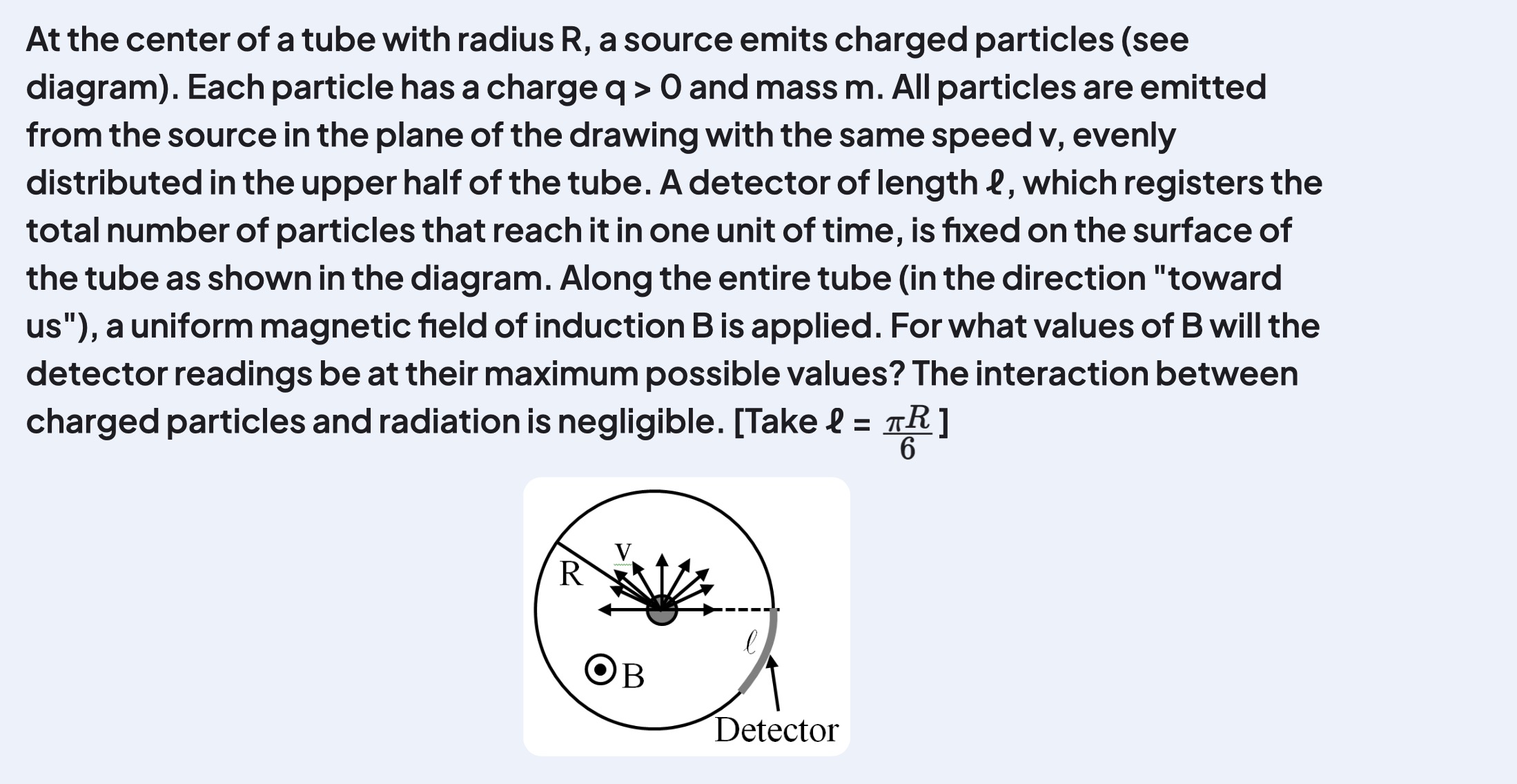Question
Question: At the center of a tube with radius R, a source emits charged particles (see diagram). Each particle...
At the center of a tube with radius R, a source emits charged particles (see diagram). Each particle has a charge q > 0 and mass m. All particles are emitted from the source in the plane of the drawing with the same speed v, evenly distributed in the upper half of the tube. A detector of length ℓ, which registers the total number of particles that reach it in one unit of time, is fixed on the surface of the tube as shown in the diagram. Along the entire tube (in the direction "toward us"), a uniform magnetic field of induction B is applied. For what values of B will the detector readings be at their maximum possible values? The interaction between charged particles and radiation is negligible. [Take ℓ=6πR]

The detector reading is maximum when
B=qR2mvsin15∘.Solution
-
A charged particle in a uniform magnetic field moves in a circle of radius r=qBmv.
-
The particle struck on the tube wall at a polar coordinate which is a function of its emission angle.
-
Maximum detection occurs when many trajectories “bunch” together (caustic formation), which happens when
- Hence, solving for B gives
